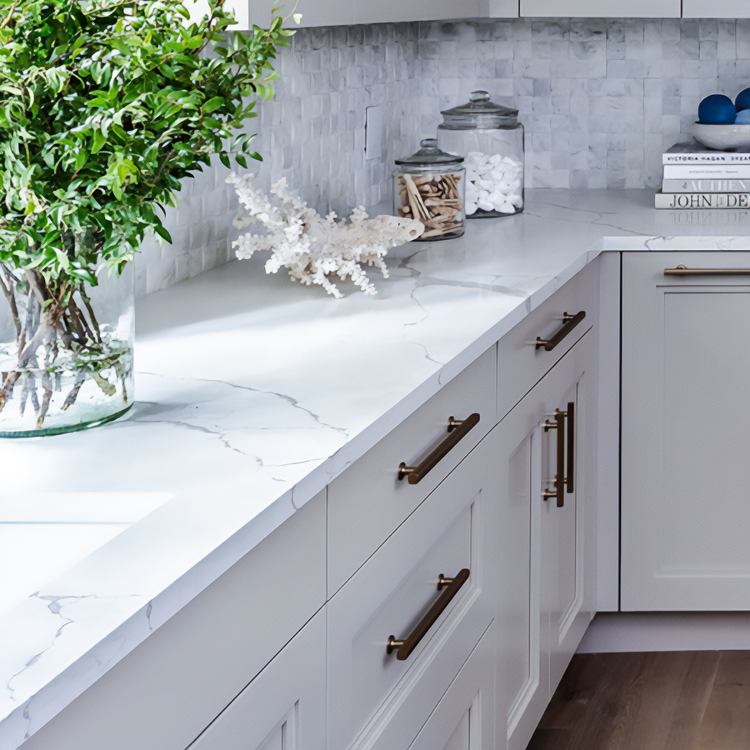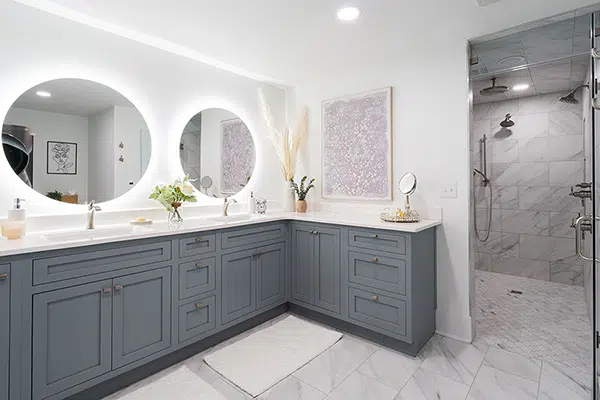Renovating your home to be more energy-efficient can save money and reduce your environmental impact. Making smart upgrades will improve comfort and lessen energy consumption. This guide will show how you can achieve these goals through practical renovations.
Improving your home’s energy efficiency starts with understanding where energy is lost. Common culprits include old windows, poor insulation, and outdated appliances. By addressing these areas, you can significantly cut down on energy waste. Upgrading windows and adding better insulation are excellent first steps toward a more energy-saving home.
Incorporating modern technology can also help. Smart home devices let you control heating, lighting, and even appliances remotely, optimizing your energy use. Plus, selecting energy-efficient appliances and sustainable materials makes your home greener and more cost-effective over time.
Renovating for energy efficiency involves altering not just how your home looks but how it performs. Making these changes can lead to a more sustainable lifestyle while enhancing comfort and adding value to your property. Ready to learn more? Let’s dive into some effective strategies.

Upgrading Windows and Insulation for Better Efficiency
One of the most effective ways to boost your home’s energy efficiency is by upgrading windows and insulation. Old, single-pane windows often let in drafts and lose heat. Consider replacing them with double or triple-pane windows. These modern windows feature gas fills and low-emissivity coatings that significantly reduce heat transfer, keeping your home warm in the winter and cool in the summer.
Insulation is another crucial element in an energy-efficient home. Poorly insulated walls, attics, and basements cause massive heat loss, leading to higher energy bills. Adding or upgrading insulation can make a big difference. Materials like spray foam, fiberglass, and cellulose are great options. Ensure that the attic is properly insulated, as heat rises and is often lost through the roof.
To get the most out of your insulation, seal any gaps or cracks around windows, doors, and other openings. Weatherstripping and caulking are simple yet effective methods to prevent air leaks. By upgrading both windows and insulation, you can create a more energy-efficient home that maintains a comfortable temperature year-round.

Incorporating Smart Home Technology
Smart home technology offers another layer of energy efficiency. Devices like smart thermostats allow you to control your home’s temperature remotely. They learn your schedule and adjust settings automatically, reducing energy use when you’re not home. This leads to noticeable savings on your energy bills.
Smart lighting systems are also beneficial. LED bulbs consume less power and last longer than traditional bulbs. Automating your lights to only turn on when needed can cut down electricity usage. Sensors can detect when rooms are vacant and turn off lights, eliminating waste.
Home energy monitors provide real-time insights into energy consumption. These devices identify which appliances use the most energy, helping you make informed decisions on where to cut back. Smart plugs and power strips also let you control devices remotely and can shut off electronics when they’re not in use.
Incorporating these technologies not only makes your home smarter but also significantly reduces energy consumption. Smart homes are the future of energy efficiency, offering convenience and cost savings for homeowners. By adopting these devices, you can make daily operations more efficient and eco-friendly.

Choosing Energy-Efficient Appliances and Fixtures
Updating your appliances and fixtures can make your home significantly more energy-efficient. When shopping for new appliances, look for the ENERGY STAR label. These appliances meet strict energy efficiency guidelines and use less power than standard models. For instance, an ENERGY STAR refrigerator uses up to 15% less energy.
Lighting accounts for a large portion of your energy bill. Switching to LED bulbs can save up to 75% on lighting costs. LEDs also last much longer than traditional incandescent bulbs, reducing the frequency of replacements. Consider installing dimmer switches and motion sensors to control lighting more effectively.
Water-saving fixtures also contribute to energy efficiency. Low-flow showerheads and faucets reduce water usage while maintaining strong water pressure. Installing a tankless water heater can further cut energy costs by heating water only when needed, rather than maintaining a tank of hot water.
Additionally, energy-efficient HVAC systems are vital. Modern systems use advanced technology to regulate temperature more efficiently, offering substantial savings on heating and cooling costs. Regular maintenance, such as changing filters and scheduling tune-ups, keeps your HVAC system running smoothly and efficiently.
By integrating these energy-efficient appliances and fixtures into your renovation, you create a more sustainable and economical home.

Utilizing Sustainable Building Materials for Long-Term Benefits
Choosing sustainable building materials is crucial for an energy-efficient home. These materials improve insulation and reduce environmental impact. Consider using recycled or reclaimed wood for flooring and cabinets. These materials are durable and environmentally friendly, adding a unique touch to your home.
Bamboo is another sustainable option. It grows quickly and is stronger than many traditional woods. Bamboo flooring and cabinetry can give your home a modern look while being eco-conscious. For countertops, quartz is an excellent choice, as it is made using sustainable practices and is more durable than granite or marble.
For insulation, consider using sustainable materials like cellulose or wool. Cellulose insulation, made from recycled newspaper, offers excellent thermal performance. Wool insulation is natural, renewable, and provides superior moisture control.
Roofing materials also play a role in energy efficiency. Metal roofs reflect solar heat, reducing cooling costs in the summer. They are also highly durable, with a longer lifespan than traditional asphalt shingles. Green roofs, which are partially or completely covered with vegetation, offer excellent insulation and reduce stormwater runoff.
By integrating these sustainable building materials into your renovation, you ensure long-term energy savings and promote a healthier environment.
Making your home more energy-efficient through renovation offers many benefits. You can lower energy costs, enhance comfort, and reduce your environmental impact. Upgrading windows and insulation, incorporating smart technology, choosing energy-efficient appliances, and utilizing sustainable materials are effective strategies to achieve these goals.
Energy-efficient renovations provide long-term savings and add value to your home. They also contribute to a more sustainable lifestyle. These changes not only make your home more functional but also healthier for you and your family.
Ready to make your home more energy-efficient? J&J Construction can help you plan and execute your renovation. Contact us today to get started and download our free kitchen design guide for inspiration on your next project.

















